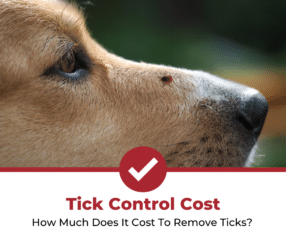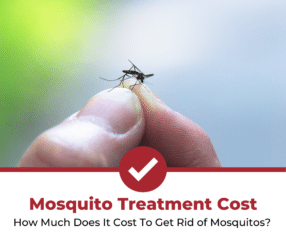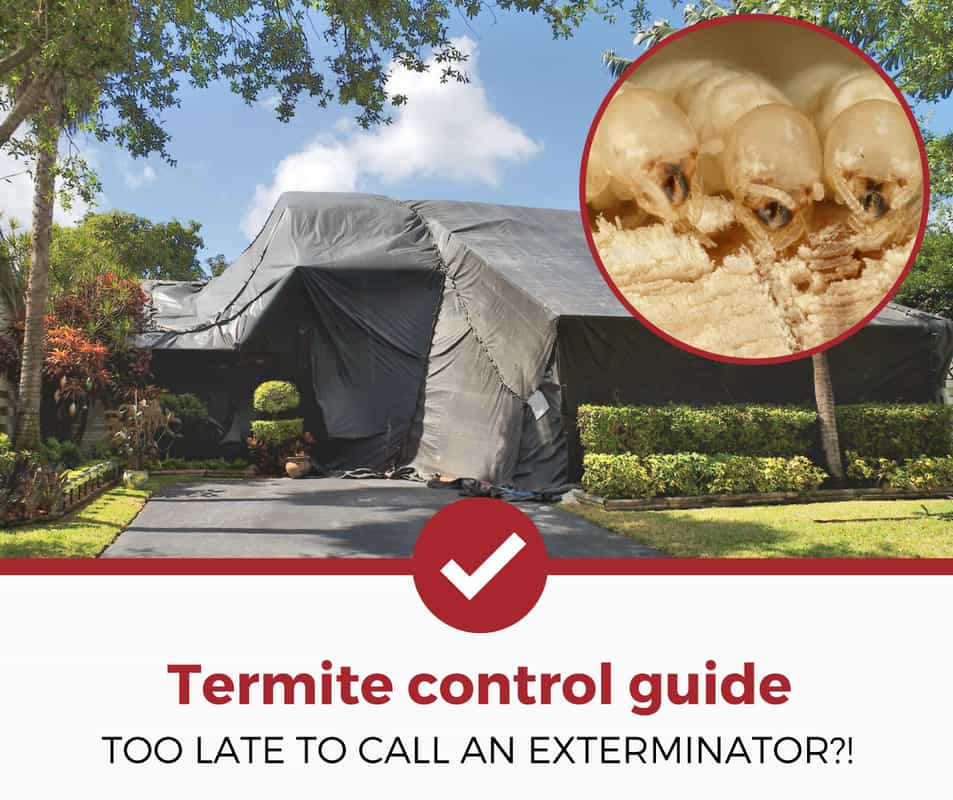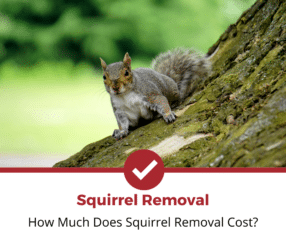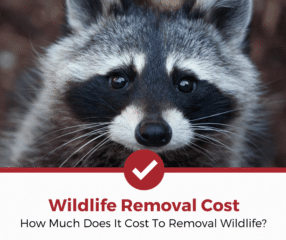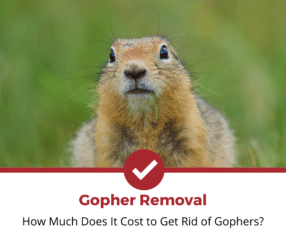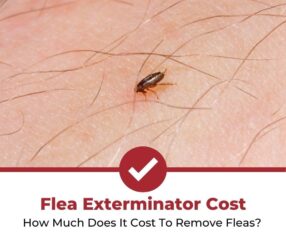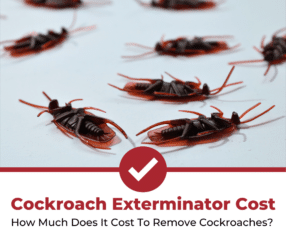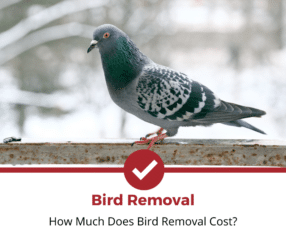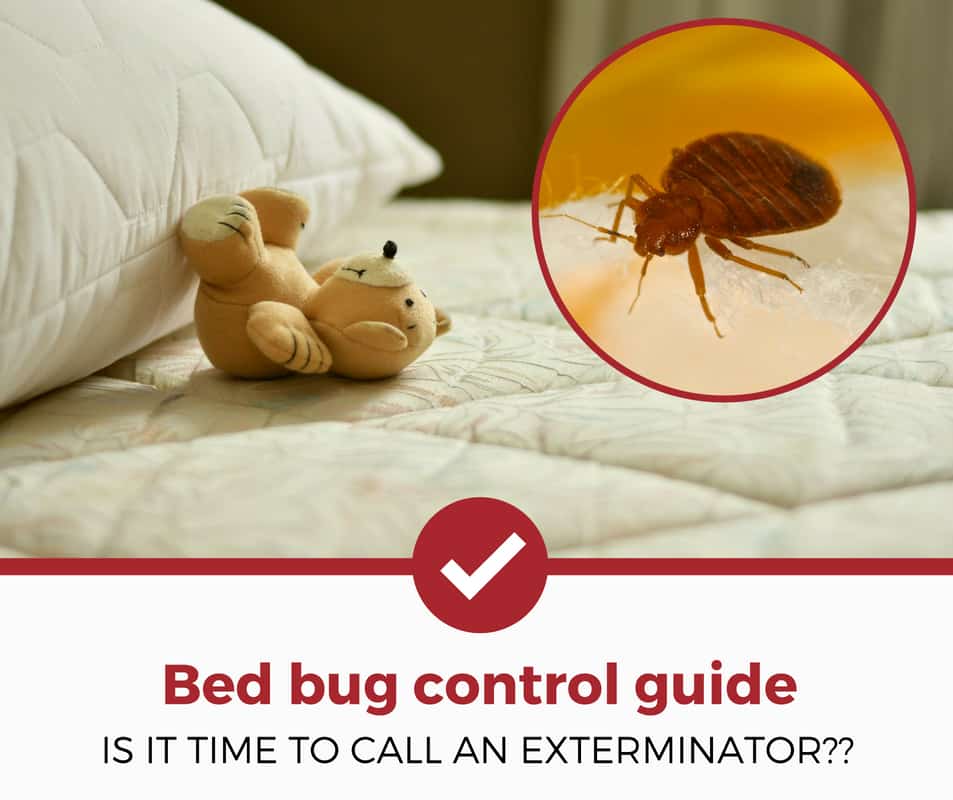According to national cost guides, the average price to hire a flea exterminator to eliminate these biting pests is $273. However, the exact cost depends on the level of flea infestation. The price can also be affected by the location and square footage of the home.
Here’s what you’ll find in our guide:
- Flea exterminator costs
- How are flea control prices calculated?
- Signs and causes of flea infestations
- Health risks
- 你应该DIY或hire a professional?
- What’s the standard flea control process?
Should you decide to call a flea exterminator, we recommendOrkin,Terminix, andAptive。这些灭蚁有一些最好的出场d professionals that are able to use traps, baits, and other chemically treated solutions, which can be dangerous to use if not handled correctly.
For quotes from Orkin, call877-831-3660, or fill outthis form。
For Terminix quotes you can reach them at866-506-2303, or withthis form。
For a free quote from Aptive, call855-426-9774or visit the company’swebsite。

Ed has been working in the pest control industry for years helping 1,000's of homeowners navigate the world of insect and rodent management. He manages Pest Strategies now helping homeowners around the world!

Table Of Contents
Average Cost and Price Ranges Nationwide:
| National Average Cost | Cost Range | Minimum Cost | Maximum Cost |
|---|---|---|---|
| $350 | $150 – $500 | $100 | $1,000 |
How Are Flea Control Prices Calculated?
There are several factors a pest control company uses to determine the price to get rid of fleas. Here are just a few examples:
Infestation level
If the problem is isolated to a single dog or cat, the standard flea exterminator cost will usually apply. However, if the human occupants are experiencing flea bites, that’s a clear indication of a severe problem. So, expect to pay more, at least for the initial visit.
Also, the infestation may have spread to both the yard and throughout the entire home. So, that could be another reason to increase the price.
Number of pets
The technician will always take note of how many animals you have on your property. The more pets there are, the higher the potential for flea infestation issues. As a result, the cost estimates will typically be higher.
Sanitation
If the technician comes into your home and sees piles of dog hair on the floor and an overgrowth of waist-high weeds in the backyard, expect to pay more for the flea treatment.
It’s true, most pest control employees are diplomatic enough to refrain from telling you directly about your home being a mess. But make no mistake, you’re going to be charged more if it is. So, vacuuming the carpeting before the technician arrives is usually a good idea.
Location
Expect to pay a standard fee if you have indoor pets and they are isolated to the inside of your home. But if the technician feels it’s necessary to spray outside, that could increase the flea extermination cost. However, this is not always the case, so it’s best to negotiate for an all-inclusive price.
Proof of pet treatment
Some pest control companies will offer discounts if you can show that your pets are currently beingtreated for fleas。However, this can be a little tricky. You’ll often need to show proof that you’ve taken the animal to a veterinarian or animal groomer. So, that five-dollar flea collar you picked up at the grocery store last week may not count.
Methods used by the exterminator
Flea bombs, flea foggers, and other fumigation devices are seldom used anymore. However, your technician may deem at least one of these treatments necessary for your situation. That typically means evacuating the home and staying longer to clean up any residual insecticides.
Also, a power treatment of the entire yard may be necessary to remove any traces of fleas on the property. Some pest control companies may charge more for this service.
Square footage
Your property’s size may be a factor when determining the price for your customized flea extermination service. For example, if your home is under 2,000 sq ft, you will probably be charged the average cost for your city. But if your property is larger than average, you may have to pay more.
A professional exterminator also may charge based on the number of areas to be treated. For example, if there is more than one infested room to be treated, that could raise the price. Also, if several pet beds are scattered throughout a large outdoor area, the cost could go up for that as well.
Frequency
The average price for a one-time flea treatment normally does not include a follow-up service call. However, you can usually negotiate with the pest control company. And a short-term contract may even be available to save you money long term.
Signs and causes of flea infestations
Fleas are parasitic, which means they feed off of the blood of animals and humans. The most common ones found around a home are cat fleas. These tiny, dark brown insects jump as high as 13 inches to their animal host. They typically feed on domestic dogs and cats but will also invade small, wild animals such as rodents, opossums, and foxes.
The flea’slife cycleis usually around two to three weeks, from egg to adult. And most cat and dog fleas can live up to a year under ideal conditions. Adult fleas lay their eggs on the animal host, providing a continuous food source in both larvae and pupae stages.
跳蚤经常被误认为是d bugs. However, adult fleas are much smaller and quicker. And unlike bed bugs, they are active any time of the day.
Here are some of the signs you may have a flea infestation:
- Continuous scratching behavior from your pets
- Tiny, black blotches of material in your pet’s bedding. These are flea eggs and waste products deposited by adults.
- Adult fleas at the base of your pet’s tail and neck
- Welts on the skin of pets and people from flea bites
- Evidence of dead fleas in the form of small, black specks
Fleas thrive in hot, humid weather. They also prefer areas with easy access to animal hosts such as pet kennels and dog houses. Wild animals wandering onto a private yard can also be a source of flea infestation for domestic cats and dogs.
Pet bedding is another hot spot. Couches, chairs, and other furniture where pets love to sleep are also ideal habitats for fleas.
Find A Local Exterminator
Health Risks
There are several health risks associated with fleas. Here, we’ve broken them down between pets and their human owners.
Risks for pets
Fleas often carry intestinal parasites calledtapeworms。They thrive inside the intestinal tracts of cats, dogs, and sometimes humans.
Pets can be infected, especially during grooming, by swallowing fleas that have the parasite. The tapeworm then begins its life cycle and reproduction within the pet’s intestinal tract.
General indications your pet may have tapeworms are noticeable during digestion. Tapeworm segments resembling white rice may be seen in the pet’s feces. And on occasion, your dog or cat may vomit the entire worm.
Other symptoms are:
- Coughing
- Tiredness
- Bloody stool
- White mucous membranes
The good news is that there are several treatment options for this disease. But it’s best to consult with your veterinarian at the earliest onset.
Risks for humans
Flea-borne typhus is a disease caused by bacteria introduced into a person’s bloodstream after a flea feeds on it. It’s usually picked up from another animal such as a rat or opossum and then transmitted to humans.
Common symptoms of flea-borne typhus include:
- Poor balance
- Loss of appetite
- Fever
- Impaired vision
- Hearing loss
In severe cases, typhus may require hospitalization for up to 30 days. Also, several blood transfusions may be needed to purge the bacteria from the patient’s bloodstream.
Most instances of flea-borne typhus are reported in the southwestern region of the US. And the recent spike in cases means that this disease may be on the rise.
DIY vs. Hiring a Professional
There are pros and cons to taking on your home’s flea problem by yourself. However, with the right tools, you can get a head start before you hire a professional exterminator.
Sanitation
Vacuuming is an excellent first step to getting rid of fleas in the carpet and furniture. A light dusting with boric acid ordiatomaceous earthwill help aid in the process. These earth-based powders are typically available online or at a hardware store.
Changing the pet bedding in the house will also go a long way in reducing flea populations. And It also helps keep these biting pests off the dog or cat.
It’s also vital to get rid of possible wildlife nesting areas in the backyard. Animals such as rodents, opossums, and other small animals can carry fleas. Making your home less attractive for these critters will help with flea prevention.
Treating your pets for fleas
The next step in the process of getting rid of fleas in your home is to remove them from your pets. You can start with combing your dog or cat with a special fine-toothed flea comb. This will help get rid of a good portion of the active adults that are bothering them.
Next comes the bath. You can buy flea shampoos at most retail outlets or pet stores. The mild soaps contained in these specialized formulations help kill fleas on contact.
Sprays and spot-on treatments may be necessary to kill the remaining fleas on your pet. These products contain active ingredients such asfiproniland imidacloprid. Both are effective on fleas without harming your pet.
Treating your home
Flea bombs and flea foggers seldom work to get rid of fleas and ticks. The reason is, the mists these pesticides create are mostly airborne. They’re unable to penetrate areas such as carpet fibers where the insects live.
的reason, it’s best to utilize mild sprays containing citrus or borates. These knockdown treatments will kill the fleas without damaging your carpeting or furniture.
Professional pest control services
Sometimes it’s just more convenient to hire a professional exterminator. For that reason, we’ve outlined a few great examples.
- Aptive Environmentaltechnicians work well with homeowners to end flea infestations. They do this through effective communication. By knowing what to expect, homeowners can be part of the team effort necessary when dealing with this prolific pest.
- Orkinmanages flea infestations differently than most companies. Instead of just relying on toxic spray formulations, it utilizes aninsect growth regulatorto disrupt the flea life cycle. This method reduces pest populations while protecting the environment.
- Terminixstarts its integrated approach to flea control by quickly identifying the pest. Then, it’s on to treating the affected area with the most advanced, EPA-approved sprays. After that, follow-up treatments are scheduled to ensure total eradication.
Most pest control companies will handle flea management. However, some won’t. So it’s best to ask which services are provided, especially if there’s a contract involved.
One downside to hiring a professional exterminator for flea control is that you may have to pay for one service visit at a time. Follow-up treatments may not be included.
Still, it’s worth asking if a second visit can be thrown in to sweeten the deal. In the competitive world of pest control, anything’s possible.
Find A Local Exterminator
What’s the standard flea control process?
Most pest control companies will have their unique, individual plans and strategies for getting rid of fleas for their customers. Despite that, there are standard procedures that are common to the entire industry. Here are a few examples.
Inspection
The technician will typically ask homeowners specific questions about what they are experiencing before conducting the inspection. Are the pets showing signs of a flea infestation? Has anyone in the home seen live insects? Is the problem confined to one area, or is it throughout the entire house?
When the technician conducts the inspection, these are the areas of concern:
- Pet bedding
- Kennel areas
- Dog houses
- Carpeting
- Anywhere the pet prefers to rest or sleep
The technician is looking forflea eggs,fecal matter, and active adults in all of these areas. Also, larvae that are hiding in carpet fiber, bedding material, and furniture may be discovered.
Identification, pest control plan, and estimate
Once the technician completes the inspection and identifies the pest, a plan is made to proceed. The homeowner is then given a cost estimate. Once the agreement is signed, work begins immediately.
It should be noted that payment is usually expected upon completion of the initial service. If the price includes a follow-up treatment, the one fee will typically cover that as well.
Treatment
This is where exterminators may differ from each other. Some will insist on spraying the outside perimeter, while others will spray only the inside. However, most will refrain from using foggers or other fumigation measures.
Several insecticide sprays areregistered by the EPAfor flea control. Some are longer lasting than others. One thing they have in common is that they work for all types of fleas.
For example, sprays containingpermethrinare great for knocking down most adult fleas within the target area. However, they don’t last very long.
That’s where insect growth regulators like methoprene and pyriproxyfen come in. These products provide long-term control by disrupting the flea’s life cycle.
The exterminator will spray all affected areas where fleas may live. For example:
- Carpets
- Pet bedding
- Underneath furniture
- Baseboards
- Windowsills
- Other areas that may harbor adult fleas or larvae.
Some treatments may include a crack and crevice dusting using diatomaceous earth or other dry substances containingborates。In rare cases, the pest control operator will spread this material over a carpeted area. It’s good to let them know if you have any objections since it could damage the carpet fibers over time.
After the initial treatment, the technician will give instructions to the homeowner. For example, if there were dry powder materials used on the carpeting, you will be required to vacuum the area after a predetermined time set by the technician.
Follow-up service calls are typically required after the initial visit. These are usually set for between 10 to 14 days after the first treatment. This is to ensure that re-infestation of the pest remains unlikely.
Final thoughts
Whether you decide to tackle your flea problem yourself or hire a pest control company, it’s always good to be informed. Hopefully, we’ve helped you achieve that goal here.
If you are going to enlist the help of a professional exterminator, there are several ways you can find the perfect one. For example, it’s best to seek the advice of people who already do business with a reputable pest control provider.
Of course, it’s preferable to shop around. However, try not to just settle on the lowest-priced option. That’s because quality matters, and you want to get the best value for your dollar.
Get Your Free Quote In Seconds
Because pest control products can be dangerous to your family if mishandled, we always recommend consulting with an exterminator even if just to ask for advice on how to apply pest control products yourself.
Our pest experts review each company for quality, cost, customer service, safety, and 100’s of other important factors and assess a rating out of 100. Below are our top 3 picks based on that review for pest removal. We’ve set up a direct line with each company so you can get fast free quotes right now.

